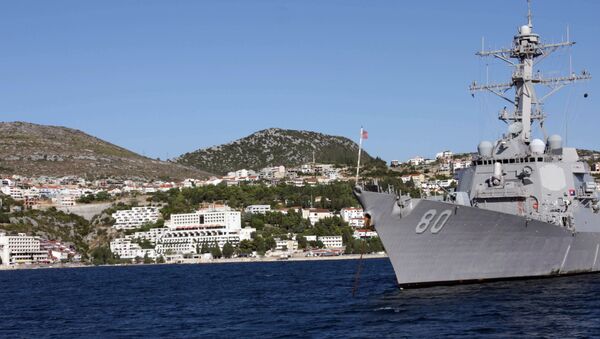Croatia possesses one of the longest and prettiest coastlines in Europe — 4,000 miles, including hundreds of tiny islands in the Adriatic Sea.
Because of a quirk of history trucks, coaches and cars have to pass through interminable passport and border checks when traveling between the capital Zagreb and the busy port and tourist resort of Dubrovnik.
The small town of Neum, in Bosnia-Herzegovina, separates southern Croatia from the rest of the country, which was formed after the painful and violent break-up of Yugoslavia in 1991.
— Total Crime (@totalcrime) 25 September 2018
Now the Croatians have started work on a 281 million euro (US$331 million) bridge which would cross from Komarna to the Peljasac peninsula, before carrying on down to Dubrovnik.
A contract was signed between a Croatian firm, Hrvatska Ceste, and a Chinese company, the China Road and Bridge Company (CRBC), in July and preparation work has already started, with the bridge planned to be open in 2021.
— The Dubrovnik Times (@DubrovnikTimes) 19 May 2018
European Union Providing Lion's Share Of Bridge Money
Most of the money for the 1.5 mile-long bridge will come from the European Union.
— Maria Monaghan (@mariamonaghan2) 22 September 2018
Croatia's Transport Secretary, Tomislav Mihotic, claimed the Bosnians had not objected to the bridge, even though it means ships entering Bosnian waters would have to travel under it to reach Neum.
But some media in Bosnia have reported the chairman of the collective presidency, Bakir Izetbegovic, could appeal to the International Tribunal For the Law of the Sea in Hamburg or The Hague.
Bosnian journalist Aleksandar Brezar tweeted that it showed "the blatant disregard Croatia has for its neighbor" and Bosnian-American politician Reuf Bajrovic said it was an "own goal by the EU" which "hindered Bosnia's access to the open seas".
— Wayne G (@MrGads2) 21 September 2018
With the exception of land-locked countries, Bosnia-Herzegovina has got the world's second shortest coastline — only Monaco has less seafront real estate — and it is all as a result of a shady deal in the 17th century.
At the time the Adriatic was dominated by two great empires — the Venetians and the Ottoman Turks.
Dubrovnik was an independent city-state which sought protection from the Ottomans after losing territory in the 1699 Treaty of Karlowitz.
Ottomans Became a Buffer to Venice
It agreed to give away a tiny slice of land on its northern edge to the Ottomans, forming a buffer against the Venetians.
— Carl Bildt (@carlbildt) 1 August 2018
That was the Neum corridor and 320 years later it is Bosnia-Herzegovina's only access to the sea.
In the mid-1990s when war broke out in Croatia and then Bosnia the map of the region was in danger of changing out of all recognition.
The Serbians carved out a Republika Srpska in western Bosnia and the Croatians threatened to take over Mostar and most of Herzegovina.
— Reuf Bajrovic (@ReufBajrovic) 31 July 2018
At one point the Serbian leader Slobodan Milosevic and the Croatian President Franjo Tudjman met to discuss carving up Bosnia, leaving up a small Bosniak Muslim state centered on Sarajevo.
But the tide of the war turned in 1995, the Croatian army defeated the Serbs and destroyed their Krajina republic enclave and the Bosnian army pushed the Bosnian Croats back from key positions in Herzegovina.
Borders Frozen Since the Dayton Accords
Eventually, the 1995 Dayton Accords were signed and the borders of Bosnia-Herzegovina was left untouched, although the Bosnian Serb area — with its capital at Banja Luka — became a semi-autonomous state within a state.
— Aleksandar Brezar (@brezaleksandar) 2 September 2018
When Croatia joined the European Union in 2013 suddenly there was a problem and it got worse when the migration crisis began two years later.
Suddenly the EU, and in particular Germany, was the destination for hordes of migrants traveling from Syria through Turkey and Greece.
With bad conditions in Greek migrant camps, many of the refugees began heading north through the Balkans and the first EU country they came to was either Hungary or Croatia.
Suddenly the Neum corridor became a liability and stronger border checks were introduced.
— tralangia (@tralangia) 22 September 2018




